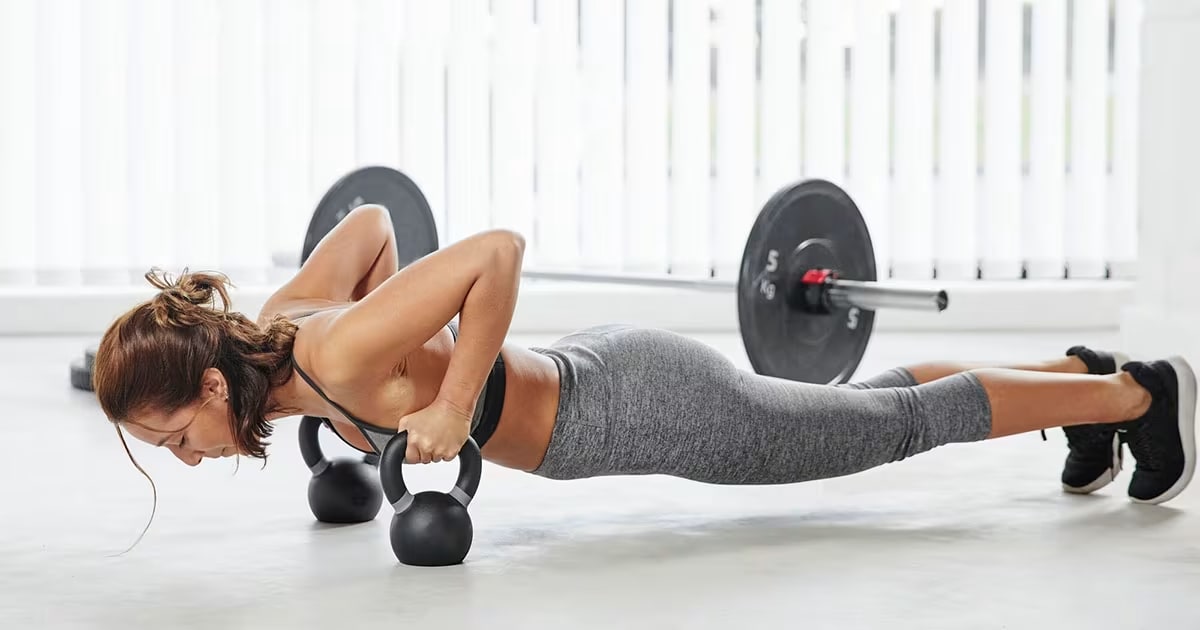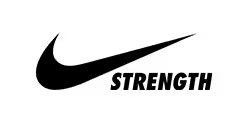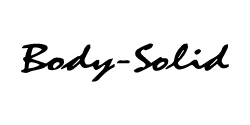With the sun blazing high and temperatures soaring, the sweltering heat of summer can make outdoor workouts seem daunting. But fear not, fitness enthusiasts! At Lifetime Fitness Store, we're here to help you conquer the heat and stay active with a line up of invigorating workouts tailored for hot weather. Get ready to embrace the warmth, break a sweat, and elevate your fitness game under the sun-soaked skies.
- Splash into Aquatic Adventures
When the heat is on, there's nothing quite like diving into a refreshing pool for a workout that cools you down while toning your muscles. Swimming laps engages your entire body, offering a low-impact cardiovascular workout that's easy on your joints.
Whether you're doing freestyle, backstroke, or butterfly, the resistance of the water challenges your muscles and helps you build strength. Add some water aerobics or poolside yoga for a well-rounded aquatic fitness session that keeps you both fit and cool.
- Hit the Trails for Trail Running
Embrace the early morning or late evening hours to hit the trails for an invigorating trail running session. Not only does running on uneven terrain engage stabilizing muscles, but the shade of the trees and the rustling of leaves offer a refreshing escape from the scorching sun. Trail running challenges your balance and coordination, making it an excellent full-body workout that brings you closer to nature while avoiding the hottest parts of the day.
- Energize with Sunrise Yoga
Greet the day with a revitalizing sunrise yoga session that blends movement, breath, and mindfulness. Find a serene spot outdoors where you can flow through sun salutations and grounding poses as the first rays of sunlight touch your skin. The gentle breeze and warm rays create a harmonious environment that rejuvenates your body and soul. Yoga not only enhances flexibility and balance but also provides mental clarity and stress relief, making it a perfect workout to kickstart your day.
- High-Intensity Interval Training (HIIT)
Maximise your workout efficiency with HIIT sessions that torch calories and build strength in a short amount of time. Choose a shady spot or opt for an air-conditioned space and alternate between high-intensity bursts of exercises like jump squats, burpees, and mountain climbers, followed by short periods of rest.
The quick-paced nature of HIIT keeps your heart rate up and promotes fat burning, making it an effective way to get a full-body workout without spending hours under the scorching sun.
- Indoor Cycling Escapes
Escape the heat and hop onto your stationary bike for an indoor cycling workout that mimics the intensity of outdoor rides. Whether you follow a virtual cycling class or create your own playlist, indoor cycling offers a challenging cardiovascular workout that gets your legs pumping and your heart racing. Adjust the resistance to simulate uphill climbs and sprint intervals, and don't forget to hydrate as you pedal your way to fitness from the comfort of your air-conditioned space.
- Dance Like Nobody's Watching
Turn up the music and let loose with a dance workout that's equal parts fun and effective. Whether you're following a dance workout video or grooving to your favourite tunes, dancing gets your heart rate up and works your muscles while bringing a smile to your face. The rhythm and movement help you forget about the heat as you sway, twist, and twirl your way to a healthier you.
- Power Up with Pilates
Pilates is a fantastic low-impact workout that targets your core, improves flexibility, and enhances posture. Find a shaded spot outdoors roll out your mat indoors, and engage in a series of controlled movements that strengthen your muscles and improve your body awareness. Pilates helps you develop a strong foundation for other activities and can be a soothing yet challenging workout option for hot weather days.
- Cool Down with Calmness
Wrap up your workout routine with a cooldown session that focuses on relaxation and rejuvenation. Stretching your muscles after exercise enhances flexibility and reduces the risk of injury. Incorporate deep breathing and meditation to help calm your mind and reduce stress, leaving you feeling refreshed and ready to tackle the rest of the day.
Top 3 Fitness Equipment for Hot-Weather Workouts
Adjustable Dumbbells – Perfect for indoor strength training when it’s too hot outside.
Indoor Cycling Bike – A heat-friendly cardio option without outdoor exposure.
Compact Treadmill – Lets you maintain steps, walks, or runs in a cool environment.
Hydration and Heat Safety
Exercising in hot weather requires extra precautions to stay safe and hydrated:
- Drink Water: Hydration is critical. Consume water before, during, and after your workout.
- Electrolytes: If you're sweating profusely, consider sports drinks to replenish lost electrolytes.
- Listen to Your Body: Pay attention to signs of heat exhaustion, such as dizziness, rapid heartbeat, or excessive sweating. Stop and rest if needed.
- Cool Down: After your workout, cool down gradually to prevent post-exercise hypotension (a sudden drop in blood pressure).
- Seek Shade: Whenever possible, work out in shaded areas to minimize direct sun exposure.
The Science of Exercising in Hot Weather
Understanding how your body responds to exercise in the heat can help you make informed decisions:
- Thermoregulation: The body has mechanisms to regulate temperature, including sweating to dissipate heat.
- Heart Rate: In hot conditions, your heart rate may be higher to pump blood to the skin's surface for cooling.
- Sweat Loss: You can lose significant fluid through sweat, leading to dehydration.
- Heat Acclimatization: Over time, your body can adapt to exercising in the heat, making it easier to tolerate.
Training Your Body in Hot Weather:
Exercising in hot and humid conditions can significantly impact your body's functioning. When you work out in high temperatures, your body's core temperature rises, prompting a series of responses to maintain equilibrium.
In an effort to cool down, your body redirects more blood towards the skin's surface. This increased blood flow facilitates heat dissipation through sweating and radiation. However, this redistribution of blood has implications for other bodily functions.
One notable effect is that less blood is available for your working muscles, which can result in a higher heart rate during exercise. This is because your heart must pump more vigorously to maintain the same level of oxygen delivery to your muscles.
Additionally, in humid weather, the effectiveness of sweat in cooling you down is compromised. Sweat relies on the process of evaporation to dissipate heat from your body. However, in high humidity, the air is already saturated with moisture, making it difficult for sweat to evaporate efficiently. As a consequence, your body may struggle to cool itself effectively, increasing the risk of heat-related issues like heat exhaustion, dehydration, or even heat stroke.
In summary, training in hot and humid conditions triggers a complex set of physiological responses aimed at regulating your body's temperature. While these responses are essential for preventing overheating, they can also lead to increased heart rate and reduced cooling efficiency in humid environments, potentially putting your health at risk if not managed carefully.
Tips for Exercising in Hot Weather
- Choose Optimal Workout Times
The prime periods for exercising during the summer are early mornings and late evenings. The rationale behind this is the peak heat typically occurs between 11 a.m. and 3 p.m. By avoiding these hours, you ensure a more comfortable and efficient workout while reducing the risk of overheating.
- Prioritise Hydration
Maintaining proper hydration before and during your hot-weather workout is imperative. Rather than waiting until you feel thirsty, it's essential to continually replenish your fluids to aid your body in temperature regulation. Beware of salt tablets, as they can exacerbate dehydration. Extremely cold water may cause stomach cramps, so it's advisable to avoid it. Opt for beverages that aren't alcoholic, caffeinated, or overly sugary, as they tend to promote fluid loss.
- Sunscreen Protection
Guarding against sunburn is not only about preventing discomfort but also preserving your body's ability to cool down effectively. Apply sunscreen with an SPF of at least 30 every two hours to ensure you remain safe from the sun's harmful rays.
- Dress Suitably
When selecting attire for hot-weather exercise, it's crucial to choose garments that cater to the conditions. Avoid the temptation of sporting an old cotton t-shirt. Instead, opt for lightweight and breathable clothing crafted from technical fabrics like polyester, nylon, and Lycra. These materials wick sweat away from your skin, enhancing comfort. Additionally, consider wearing light-coloured clothing, as they reflect heat more effectively than darker hues, helping you stay cooler.
- Listen to Your Body
Exercising in hot weather necessitates a realistic assessment of your physical abilities and fitness level. If you're not in peak condition or unaccustomed to workouts in hot conditions, pay attention to your body's signals. If you start experiencing dizziness, nausea, or fatigue, it's advisable to take a break in the shade or call it a day. Rest intervals between workouts are essential to avoid compromising your health and fitness goals.
- Replenish Electrolytes
Consuming a sports drink post-workout in hot weather can help restore lost electrolytes, minerals, and salts while facilitating rehydration. Opt for a low-calorie sports drink to minimize sugar intake.
- Adjust Your Workout Plan
Your standard workout routine may require modification when exercising in hot weather. For instance, if you engage in interval training, consider extending your rest intervals. When elevating the intensity and duration of outdoor workouts, do so gradually. This approach enables you to gauge your limits without pushing yourself too hard.
- Embrace the Pool
Swimming is an excellent choice for hot-weather exercise. It offers a full-body workout while keeping you relatively cool. Remember to apply waterproof sunscreen if you're swimming outdoors in a pool or a natural body of water.
- Utilize Indoor Facilities
Even if the gym lacks air conditioning, opting for indoor workouts can be advantageous. A midday gym session is far more comfortable and safer than exercising under the scorching sun. Nevertheless, adequate hydration remains essential for indoor workouts.
- Check Weather Reports
Before embarking on your workout, consult the weather forecast. On exceptionally hot days, it's prudent to scale back your exercise or wait for cooler conditions. What might usually be an easy workout can feel unexpectedly intense and risky in high temperatures. Individuals more susceptible to the challenges of hot-weather exercise include those with larger body sizes, the elderly, children, and newcomers to physical activity.
Keys to Prevention of Hazards
Exercising in high temperatures can potentially lead to two heat-related conditions: heat exhaustion and heat stroke. These conditions have distinct symptoms and severity levels.
Heat Exhaustion:
Heat exhaustion is generally considered less severe than heat stroke, but it requires prompt attention to prevent it from escalating. It often develops gradually, typically over several days of exposure to hot weather, especially if you haven't adequately hydrated. Recognizable signs of heat exhaustion include:
- Heavy Sweating: Excessive sweating is one of the primary indicators of heat exhaustion as your body tries to cool down.
- Muscle Cramps: Painful muscle cramps can occur due to dehydration and electrolyte imbalances.
- Fatigue: You may feel unusually tired and lacking in energy.
- Weakness: A noticeable decrease in physical strength can be a sign of heat exhaustion.
- Dizziness: You may experience lightheadedness or a sensation of spinning.
- Headache: Heat-related headaches can be persistent and throbbing.
- Fainting: Some individuals with heat exhaustion may faint or feel on the verge of fainting.
- Nausea or Vomiting: Upset stomach and vomiting are common symptoms of heat exhaustion.
- Dark Urine: Urine may become darker in colour due to dehydration.
- Cool, Moist Skin: Unlike heat stroke, your skin tends to remain moist with perspiration in heat exhaustion.
Heat Stroke:
Heat stroke is a more severe and life-threatening condition that demands immediate medical attention. It can escalate rapidly, with body temperatures soaring to 40 degrees Celsius (104 degrees Fahrenheit) within just 10 to 15 minutes. Recognizing the symptoms of heat stroke is crucial:
- Dry, Hot Skin (No Sweating): In contrast to heat exhaustion, heat stroke victims typically stop sweating as their body's cooling mechanisms fail.
- Rapid, Weak Pulse: The pulse becomes rapid and weak as the body struggles to cope with the heat.
- Confusion: Confusion and altered mental states are common in heat stroke cases.
- Seizures: Some individuals may experience seizures due to the extreme heat stress on the brain.
- Unconsciousness: Heat stroke can lead to unconsciousness or a state of complete loss of consciousness.
If you encounter someone displaying symptoms of heat stroke, it's imperative to act swiftly. Call emergency services immediately. While awaiting professional assistance, attempt to cool the person down by placing them in the shade and applying cool water to their body. According to the Mayo Clinic, rapid cold water immersion is the most effective way to lower body temperature in cases of heat stroke. The sooner this is initiated, the better the outcome.
Embrace the Heat, Embrace the Challenge
As the mercury rises, don't let the hot weather deter you from staying active and healthy. At Lifetime Fitness Store, we encourage you to embrace the heat and explore these diverse workouts that not only keep you fit but also invigorate your spirit. Whether you're diving into the pool, hitting the trails, dancing, or practising yoga, each workout offers a unique way to challenge yourself while soaking in the warmth of the season. So grab your workout gear, stay hydrated, and let the sun inspire you to reach new fitness heights!
Remember to listen to your body, stay hydrated, and adjust your workout intensity based on the weather conditions and your individual needs.






















